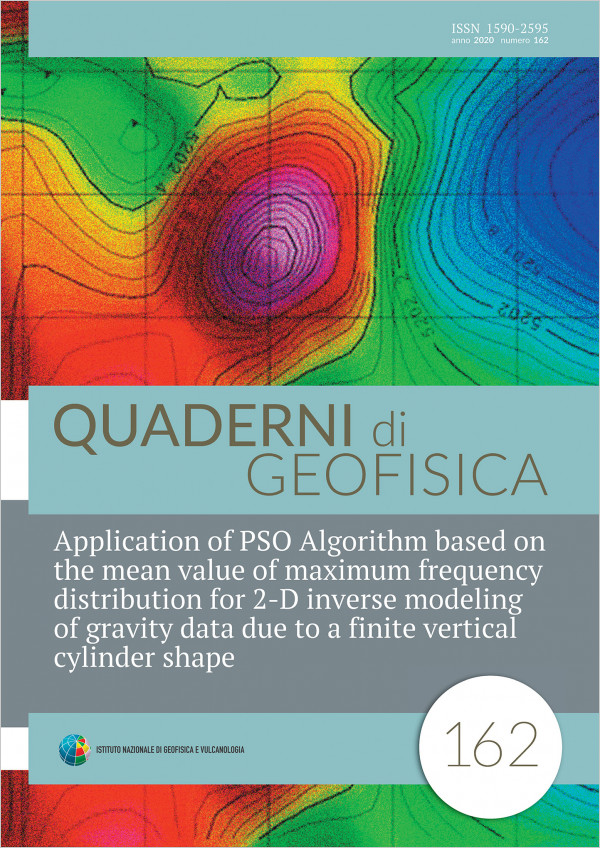In this paper, Particle Swarm Optimization (PSO) algorithm is employed to invert the gravity anomaly due to a finite vertical cylinder source. The PSO inversion determines the radius (R), density contrast (ρ), depth to top (z) and bottom (h) parameters of a gravity anomaly causative body and also the location of anomaly source (origin x0) and gravity value in the origin (gx0) whose amount is maximum. During an iterative process, PSO estimates the subsurface model parameters and the gravity response according to them at each iteration. A profound weak point of Particle Swarm optimization method is getting into local minimum as the PSO algorithm can not estimates the optimal solutions. In order to overcoming this problem, the code is run frequently and the abundance distributions of the estimated values for the different parameters is drawn. Average value of each range whose frequently distributions is maximum are considered mas best solution. To evaluate the proficiency of the PSO method, a finite vertical cylinder synthetic model has been considered as the satisfactory results were achieved for the noise-free and noise-corrupted gravity data. We have also applied this approach for In this paper, Particle Swarm Optimization (PSO) algorithm is employed to invert the gravity anomaly due to a finite vertical cylinder source. The PSO inversion determines the radius (R), density contrast (ρ), depth to top (z) and bottom (h) parameters of a gravity anomaly causative body and also the location of anomaly source (origin x0) and gravity value in the origin (gx0) whose amount is maximum. During an iterative process, PSO estimates the subsurface model parameters and the gravity response according to them at each iteration. A profound weak point of Particle Swarm optimization method is getting into local minimum as the PSO algorithm can not estimates the optimal solutions. In order to overcoming this problem, the code is run frequently and the abundance distributions of the estimated values for the different parameters is drawn. Average value of each range whose frequently distributions is maximum are considered mas best solution. To evaluate the proficiency of the PSO method, a finite vertical cylinder synthetic model has been considered as the satisfactory results were achieved for the noise-free and noise-corrupted gravity data. We have also applied this approach for inverse modeling two real gravity anomaly due to a chromite deposit mass, situated east of Sabzevar, Iran and a salt dome offshore titled Louisiana from USA.
Published: 2020-10-14

